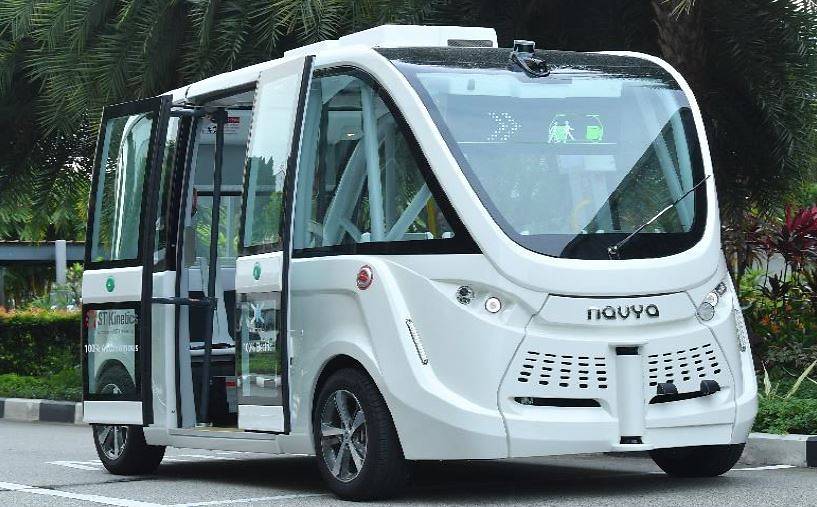SINGAPORE: Jackson Diehl of The Washington Post called 2019 as “the year of the street protester”.
While Singapore’s streets have been free of protesters, 2019 might be remembered as “the year of the disappearance of e-scooters”.
After a spate of accidents involving e-scooters and pedestrians, Singapore joined a growing list of cities globally in banning e-scooters on footpaths. Following nearly two months, has the situation really improved?
TRUCE ON THE PATH
With the use of e-scooters now confined to the 440km of cycling paths and Path Connector Networks, pedestrians no longer share paths with e-scooters. For comparison, there are roughly 5,500km of footpaths.
There have been almost no reported incidents involving e-scooters and pedestrians since the footpath ban imposed on Nov 5.
READ: PMD numbers set to plunge, but devices can still play a role in urban transport, say experts
Despite the advisory period to allow riders to adjust, where errant users will be given warnings up until Dec 31, we no longer tussle or jostle for space with an e-scooter – at least not as often.
Likewise, we no longer have awkward or startling moments when hearing an e-scooter’s horn, freezing on the spot, not knowing where we should place ourselves on the path, so as to get out of the way of the e-scooter. The remaining e-scooter users on footpaths have become more pliant about giving way to pedestrians, generally speaking.
E-scooter riders in Singapore. (File photo: AFP/Roslan Rahman)
The Land Transport Authority will adopt a zero-tolerance approach towards riders who flout the rules and continue to ride on footpaths come Jan 1.
This has made moot the need for PMD users and pedestrians to reach an understanding on how they can share paths safely.
The e-scooter ban is but a truce on the use of paths. It is merely a measure targeting a symptom.
READ: Commentary: What’s next for e-scooters after the footpath ban?
The ban does not adequately address the previous challenges we faced with e-scooters on our pathways. Norms and etiquettes governing interactions between pedestrians and e-scooter users were not established or followed.
So it is likely that we will hear about incidents involving pedestrians and e-scooters again if e-scooters are allowed to share paths without tackling these challenges.
How should we coexist with e-scooters and other personal mobility devices (PMDs), seeing that such options must be available for last-mile connectivity if we want to seriously move towards a car-lite society?
INFRASTRUCTURE BOTH THE CHALLENGE AND THE SOLUTION
Senior Minister of State for Transport Lam Pin Min announced two weeks ago that the authorities are looking to expedite the expansion of Singapore’s cycling path network.
This comes on the back of calls for the expansion of cycling infrastructure and the creation of separate paths for “car-lite modes” (vehicles too fast for a footpath but too slow for a road).
A man pushes his e-scooter during car-free Sunday in Singapore.
Infrastructure upgrade would take time, money and political will. In Singapore, there is also the challenge of finding the space to do so – a common challenge when cities attempt to integrate e-scooters into existing transport systems.
We could repurpose roads into paths for car-lite modes. This could encourage more people to cycle or use PMDs to get around, in line with Singapore’s vision of becoming car-lite.
Commentary: Can we co-exist with PMDs? Yes, but we need to take a different path
But as we can glean from the experiences of Amsterdam and Copenhagen, widely acknowledged as being two of the best cycling-friendly cities, there must be limits to how e-scooters and bicycles coexist.
In early 2019, Amsterdam banned mopeds on cycling paths to ease congestion for cyclists. E-scooters are also illegal on both cycling paths and sidewalks.
In Copenhagen, e-scooters are legal but they are limited to cycling lanes and are subjected to the same traffic rules as bicycles. There is also tight control over the e-scooter population to address congestion.
E-scooters might crowd cycling paths, and the speed differences between bicycles and e-scooters might lead to accidents, not unlike interactions between e-scooters and pedestrians.
READ: Commentary: E-scooter ban on footpaths – here’s a list of those who got off scot-free
Perhaps our streets might be safest when we have separate paths for each user – one for pedestrians, one for personal mobility devices, and one for bicycles.
This might be feasible for now but sustainability would be an issue. We certainly cannot construct new paths or upgrade our infrastructure each time a new mobility device that changes how people move within the city appears on the market.
There is also no certainty that building or repurposing infrastructure will change social behaviours positively. Shortly after the footpath ban, some riders took their e-scooters onto adjacent patches of grass.
Screengrabs of videos posted on social media of PMD users riding on the grass turf next to footpaths. (Videos: Facebook/Leonardo Clyde Alfonso/Ryan Wong)
Social behaviours do not exist in a vacuum. People interact with infrastructure and form complex sociotechnical relationships and systems over time which cannot be simply reshaped without consequences.
For instance, with the ban, people who have come to rely on e-scooters and PMDs due to health reasons or disabilities suddenly found a once viable mode of travel or earning a living become unavailable overnight. It is not easy for such individuals to find a replacement with similar enablement.
FOSTERING A NEW NORM
Retrospectively, e-scooters and other PMDs that shared the paths with pedestrians came across as a challenge to the unwritten norms and etiquettes that we, as pedestrians, have grown accustomed to.
But many of us have admittedly benefited from the introduction of e-scooters.
They offered some a reliable and affordable mode of transport in their short-distance or first- or last-mile trips that complemented public transport. For others, they offered a new weekend activity.
LISTEN: What happened with rules, e-scooter riders and pedestrians and what’s next, a Heart of the Matter podcast episode
Beyond transport, e-scooters also opened up new opportunities of livelihood for delivery riders and has given us the convenience of having food and other goods delivered right to our doorsteps.
Now that e-scooters have been banned from footpaths, it offers us time to reflect on what we want of e-scooters and PMDs in Singapore.
A GrabFood rider on an e-scooter. (File photo: TODAY/Najeer Yusof)
On Sep 27, the Active Mobility Advisory Panel (AMAP) recommended that a code of conduct be introduced to guide pedestrians on sharing paths safely with other pedestrians and active mobility device users.
Pedestrians are to keep to the left of the path when walking unless overtaking and avoid walking on the cycling side of shared paths. In addition, they are to be alert to their surroundings when walking (i.e. not using phones or plugging in to audio devices).
READ: Commentary: Don’t complain about rules for bikes and PMDs until we’ve proven we can be responsible
READ: Commentary: What happened to caution and graciousness on the roads?
The Government has announced that they have accepted and will implement this recommendation. We shouldn’t have issues abiding by this code of conduct, since it formalises unwritten norms and etiquettes we have already been practising as pedestrians.
In fact, we should be more ambitious to extend this code of conduct beyond pedestrians. All individuals, pedestrians or otherwise, should practise sensibility, safety and self-awareness when sharing paths or any infrastructure for the matter.
THE NEW NORMAL
E-scooters will not be the last innovation that will hit our streets. Autonomous vehicles, in the form of smart autonomous wheelchairs to driverless shuttles and buses, dawn on Singapore’s horizon and in time to come, will once again challenge the norms of how paths and roads are used.
Pedestrians, cyclists, e-scooter and PMD users will have to adapt to share paths with autonomous wheelchairs. Drivers and other no-road users will have to adapt to interacting with autonomous shuttles and buses.

File photo of a driverless shuttle bus in Sentosa, Aug 26, 2019. (Photo: MOT, SDC, ST Engineering)
How we respond and move on following the e-scooter ban sends a strong signal of how we, as a society, are accepting of new innovations and are able to integrate them into our mores, with due consideration to the needs of different segments of society.
In our drive towards being a Smart Nation, we will see more innovations being introduced in the coming years. We need to adapt to this new normal.
This time we were not successful in integrating e-scooters into our transport system. Hopefully, the next time a new innovation comes around, we will be able to adopt it and adapt our norms for it quicker, at least before a ban is implemented.
Samuel Chng is an applied social psychologist and Research Fellow at the Lee Kuan Yew Centre for Innovative Cities at the Singapore University of Technology and Design. Irna Nurlina is a political scientist and Research Associate at the same centre.




